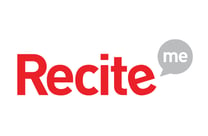This blog outlines a 10-step guide to help you strategise and hire more care workers. If you're looking for direct help - explore our dedicated page for the health and care sector.
In this guide, we're going to explore:
- How to make a strong Employee Value Proposition
- Add videos to your adverts
- Market the flexibility of shift working
- Don’t just copy the job specification
- Make applying easy
- Support those with specific needs
- Frequent communication is key
- Don't lose focus at the offer stage
- Keep your promises to candidates
- ‘Next time not never’ for the unsuccessful
How to make a strong Employee Value Proposition
Time will be of the essence, so lengthy corporate branding projects won’t help in the short term, but there is plenty that can be done quickly to help. Ask yourself…
- What sets your organisation apart and what will they get from it?
- Is it money and benefits, or is it skills development, career progression and job satisfaction?
Develop this into consistent introductions used in all adverts to build this awareness. Update your organisation's career pages as well as LinkedIn, Indeed and Glassdoor profiles.
Add videos to your adverts
Would-be applicants value ‘real’ information and insight in these videos from real employees acting as ambassadors, rather than ‘corporate brainwashing’. Film them on a mobile for authenticity and upload to YouTube or Vimeo and embed them into your adverts.
- Our research shows with video in adverts applications increase 34% and rejections reduce by 2/3 indicating a better ‘quality’ of candidate, and importantly meaning more pass into and through the recruitment funnel.
Market the flexibility of shift working
The round-the-clock service nature of care provision requires shift patterns and staff that can work at short notice. Turn this into a positive feature! The lockdowns of the pandemic have created a significant shift in expectations and desires across the labour market. Promoting your flexible hours and vocational roles could see your applicant pool increase in size and quality.
- Our research shows with video in adverts applications increase 34% and rejections reduce by 2/3 indicating a better ‘quality’ of candidate, and importantly meaning more pass into and through the recruitment funnel.
- Recent research from CareerArc shows 61% of candidates plan to change jobs in 2021, and over half expect some degree of flexible or home working.
- A survey by Prudential and The Economist found that 42% said they will resign if they aren’t granted it.
Don’t just copy the job specification
Be realistic and think of things from the potential candidate’s perspective, and the likely negatives they might identify. the approach at the organisational level, ask yourself:
- What makes this specific care home and this specific vacancy attractive to a candidate, especially given the competition from other organisations for their services?
- Is it the location, the facilities, the people, the training?
- How easy is it going to be for potential candidates to reach the location?
- For those awkward ‘out-of-hours’ shifts is there a public transport option?
Make applying easy
Application forms should carry on the use of the tone and language of your culture and EVP, be inviting to the candidate, and not be onerous or overbearing. What is the minimum information you need to get them into your funnel?
Support those with specific needs
An organisation with an online application process or system that doesn’t have tools to support those with dyslexia, could be missing out on many potential candidates:
- Skills for Care estimates there to be 1.62 million jobs in adult social care in the UK.
- The British Dyslexia Association estimates 4 – 10% of UK adults have dyslexia to
 some degree.
some degree. - In 2020, around 84% of the adult social care workforce were British, which could mean circa 54,000 – 136,000 care industry employees with dyslexia.
- That number magnifies significantly when you consider typical application to hire ratios.
Frequent communication is key
Contact new candidates quickly. It will show them you are interested and make them feel wanted, and you can find out other information you may have stripped from your streamlined online application. Candidates may be working already, and for a rival.
- How easy is it for them to be able to attend an interview or show-around at your location, bearing in mind the time and cost?
- Could this be more easily facilitated by video interview and online video tour.
- If I this received this email; would it keep me keen?
Don't lose focus at the offer stage
This is the time when it would be most expensive to lose out to a rival recruiter. It is too easy to kick back and think ‘’job done’’. Not at all, this marks the end of selection and the journey of onboarding into employment.
An ATS that offers digital contracts and offer packs, and an online reference portal for referees, will help reduce the time (and risk) between offer and start. An online 'Welcome Hub' onboarding experience, will seal their decision and trust, and keep them committed to, and excited about joining.
Keep your promises to candidates
Happy employees will increase retention and decrease your vacancies, which is the easiest option when facing a recruitment challenge like the one now in the care industry.
‘Next time not never’ for the unsuccessful
Make your rejection communications friendly and personalised. Use data merge fields to embed information from your shortlisting or interview notes stored in your ATS, as specific feedback for the reason for rejection, and to reference the positives you recorded about them too! After all, you may cross paths again in the future, perhaps as a future hire, a future colleague or peer, or even as one your organisation’s customers.
Much of the information in this article came from our Talent Intelligence engine. If you'd like to learn more about the work we do, and how it can help you, click here.